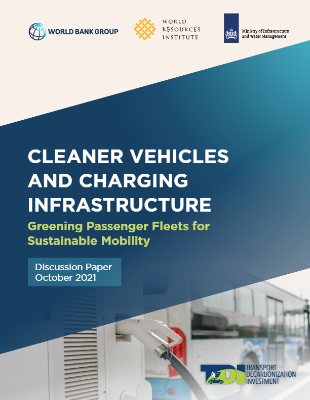Context: Electric Mobility and Influencing Factors
Mobility is essential for economic and social development, but the transport sector in most countries is not sustainable in its existing form.
Reducing Greenhouse Gas (GHG) emissions and local pollutants in the transport sector will create a cleaner, healthier and more livable future for everyone. The transport sector contributes about one-fifth of total global carbon dioxide emissions, and road transport was responsible for more than 77 percent of global transport-related carbon dioxide emissions in 2020 (ICCT 2020). At the same time, the transport sector remains a major contributor to the air pollution burden globally. Globally, particulate matter (PM2.5) and ozone concentrations from transport’s tailpipe emissions resulted in health damages equivalent to an estimated 7.8 million years of life lost and approximately US$1 trillion in health damages in 2015. (Anenberg et al. 2019)
Electric mobility (e-mobility) represents a crucial opportunity to develop a more sustainable transport system. The need for sustainable and clean transport systems to combat climate change, coupled with technological progress in the transport and power sectors, is making e-mobility increasingly popular worldwide. Within the avoid–shift–improve (ASI) framework,2 e-mobility fits under the “improve” dimension, but it can also play an important role in the “shift” dimension if the comfort offered by e-buses or convenience offered by e-bikes catalyzes modal shift. Adoption of e-mobility needs to be combined with transport demand management strategies to reduce vehicle miles traveled and to curb greenhouse gas emissions from the transport sector.
Electrification of transport offers significant environmental benefits and at the same time produces a long-lasting economic impact. E-mobility is an important way to mitigate air pollution by reducing carbon intensity of the transport sector as it has better efficiency than internal combustion engine (ICE) vehicles and has zero tailpipe emissions. Through electrification of transport, the International Energy Agency (IEA) estimates that electric vehicles can reduce GHG emissions by almost half compared to an equivalent fleet of ICE vehicles under existing government policies (IEA 2020). Moreover, e-mobility can effectively cut down noise pollution in densely populated areas. Research shows that the advent and diffusion of electric propulsion systems will lead to significant reductions of the urban noise pollution and result in new soundscapes (Maffei and Masullo 2015). Beyond environmental gains, the electrification of transport could offer numerous other benefits: (i) economic gains from the development of electric mobility value chains and lower total cost of ownership (TCO) for users, especially if the prevalent decrease in battery production costs continues; (ii) increased energy efficiency of the transport sector; and (iii) energy independence as diversity in the fuel portfolio of countries and reduced dependence on fossil fuels, in particular imports of fossil fuels, would foster national security.
The Note identifies tangible actions and policies that governments can adopt to facilitate the adoption of e-mobility in passenger transport. In doing so, it identifies practical considerations 2 that governments should keep in mind when facilitating e-mobility adoption. Passenger transport includes public, shared, and private transport. This technical note places a strong emphasis on public and shared transport as improving it: (i) helps make the transport system less congested, reducing the need for many separate trips by private vehicles; (ii) can benefit people across all income strata; and (iii) can, with higher utilization, harness the operational cost savings of electrification faster than relatively low utilization private vehicles.











